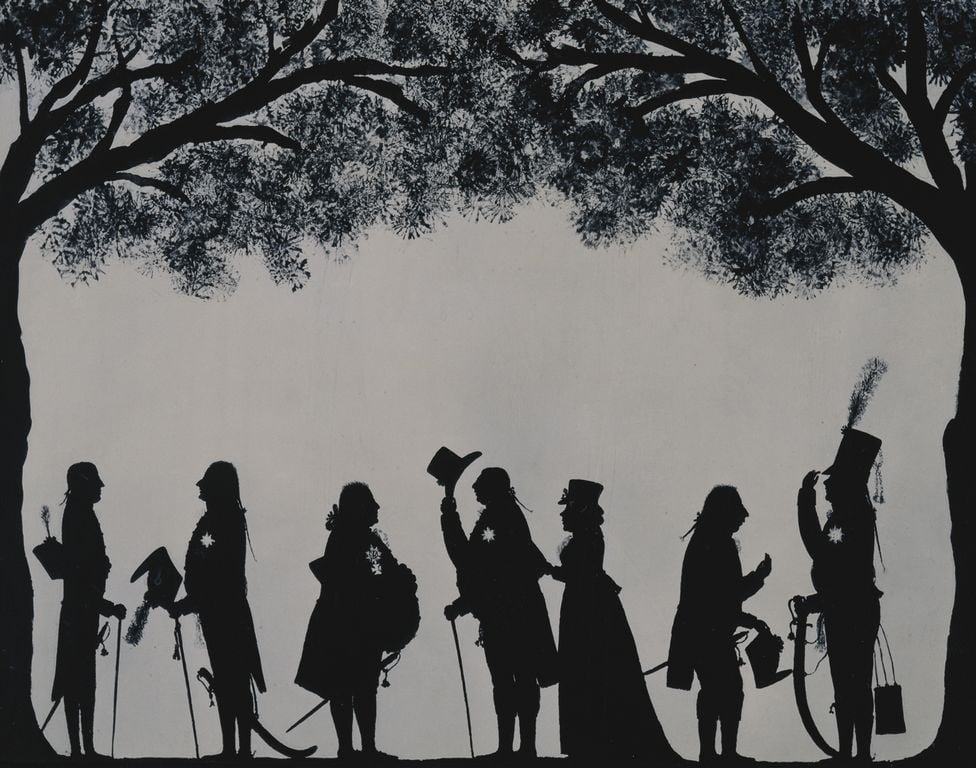The silhouette portrait – a profile image in a single colour, usually black against a white background – was a popular form of portraiture in the eighteenth and nineteenth century. The Royal Collection includes an album of silhouettes made or collected by Queen Victoria when she was Princess Victoria of Kent. The album contains a number of portraits of family members, such as this portrait of Queen Victoria’s mother, the Duchess of Kent, and also of some of the other people who surrounded her, as in the portrait of Sir John Conroy, Comptroller to the household of the Duchess of Kent.
The album contains a total of 19 silhouettes but these are not limited to portraits of people. A well-known animal lover, Queen Victoria included in this album silhouettes of several horses, such as this one of Blanche who she rode as a teenager.
Queen Victoria’s silhouettes are cut from black paper and mounted onto a lighter background, but this method of making a silhouette was not the only technique available. Whilst some silhouette artists would cut a portrait just from observation with the naked eye, using a pair of scissors and some paper – a precise and skilled art, often carried out at great speed – others might paint an image onto paper or glass, as you can see in these silhouettes of a fashionably dressed woman (probably the writer Fanny Burney) and a group of figures at the seaside resort of Weymouth.
The art of silhouette making was not only restricted to profiles, however. In ‘paper cutting’ (the art of cutting out a design from a single sheet of paper) one could create an entire scene in silhouette. One royal artist who was particularly active as a maker of silhouette scenes was Princess Elizabeth (1770–1840), the seventh child of George III and Queen Charlotte, whose paper cuttings include charming scenes of children playing.
Silhouette of a woman seated on a bench
©Why not try:
Take inspiration from Queen Victoria’s album and try making a silhouette yourself. You may wish to cut out a silhouette profile using just scissors and paper, or you might prefer to try making a portrait with black paint on a clear or white surface. Alternatively, you can use the instructions below to cast a shadow onto a wall using a torch or another strong source of light, and draw around the shadow to create the basis of a silhouette.
You will need:
A subject (a family member, or even a pet!); a torch or lamp; a piece of A3 paper; a pencil or pen; black paper or paint
Step by Step:
1. Position your subject in profile in front of a blank wall.
2. Using a torch, at eye level shine a beam directly towards the subject’s profile, creating a shadow on the wall behind. Be sure to ask them to close their eyes!
3. Take a piece of blank paper and tape or tack it onto the wall, directly onto where the shadow or the profile falls.
4. Using a pen or pencil, draw carefully around the shadow, leaving you with the outline of the profile.
5. You can then cut this outline out to use as a template for a cut silhouette on black paper, or you can paint the inside of the outline using black paint to create your silhouette, and then mount on white paper.











